The Isle of Man has an extensive communications infrastructure consisting of telephone cables, submarine cables, and an array of television and mobile phone transmitters and towers.
Turkmenistan has a state-controlled press and monitored communication systems. Turkmenistan's telecommunications services are considered to be the least developed of all the Commonwealth of Independent States (CIS) countries. Overall, the telecom market in this predominantly rural country is relatively small but has been trying boldly to expand in recent years. The state-owned Turkmen Telecom has been the primary provider of public telephone, email and internet services, and through a subsidiary has been operating a GSM mobile network in competition with a private mobile operator, BCTI.
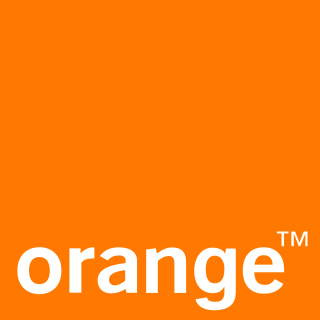
Orange S.A. is a French multinational telecommunications corporation headquartered in Issy-les-Moulineaux, near Paris.

Telecommunications in Australia refers to communication in Australia through electronic means, using devices such as telephone, television, radio or computer, and services such as the telephony and broadband networks. Telecommunications have always been important in Australia given the "tyranny of distance" with a dispersed population. Governments have driven telecommunication development and have a key role in its regulation.

Digital radio is the use of digital technology to transmit or receive across the radio spectrum. Digital transmission by radio waves includes digital broadcasting, and especially digital audio radio services.
Television broadcasting in Greece began in 1966, preceded in 1951 by statute 1963 permitting television broadcasting.
Free-to-air (FTA) services are television (TV) and radio services broadcast in unencrypted form, allowing any person with the appropriate receiving equipment to receive the signal and view or listen to the content without requiring a subscription, other ongoing cost, or one-off fee. In the traditional sense, this is carried on terrestrial radio signals and received with an antenna.

Master control is the technical hub of a broadcast operation common among most over-the-air television stations and television networks. It is distinct from a production control room (PCR) in television studios where the activities such as switching from camera to camera are coordinated. A transmission control room (TCR) is usually smaller in size and is a scaled down version of centralcasting.
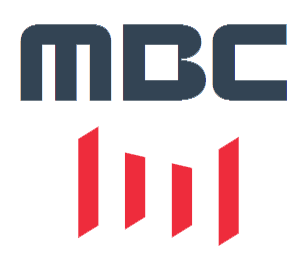
Munhwa Broadcasting Corporation is one of the leading South Korean television and radio broadcasters. Munhwa is the Sino-Korean word for "culture". Its flagship terrestrial television station MBC TV broadcasts as channel 11.
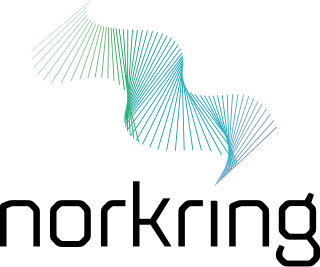
Norkring AS is a provider of digital terrestrial television and radio transmitting in Norway and Belgium. In Norway, Norkring operates a Digital Video Broadcasting – Terrestrial (DVB-T) network for Norges Televisjon, as well as an FM and Digital Audio Broadcasting (DAB) radio. In Belgium, Norkring operates a DVB-T, DVB-T2, FM, DAB and DAB+ network. It operated a DVB-T network in Slovenia between 2010 and 2012. Norkring is owned by Telenor; Norkring België is owned 75 percent by Norkring and 25 percent by Participatiemaatschappij Vlaanderen.
Television in France was introduced in 1931, when the first experimental broadcasts began. Colour television was introduced in October 1967 on La Deuxième Chaîne.
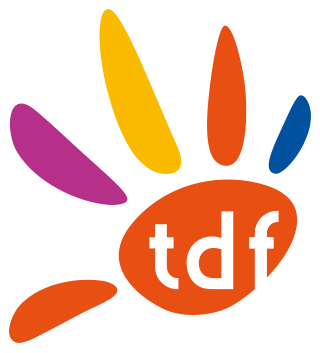
TDF is a French company which provides radio and television transmission services, services for telecommunications operators, and other multimedia services – digitization of content, encoding, storage, etc.
Television is the most popular medium in Russia, with 74% of the population watching national television channels routinely and 59% routinely watching regional channels. There are 6,700 television channels in total. Before going digital television, 3 channels have a nationwide outreach : Channel One, Russia-1 and NTV.
G-Sat is a subscription-based direct-to-home (DTH) satellite television service commercially available in the Philippines. G-Sat is owned by Global Satellite Technology Services (GSTS), registered in the Philippines with the Securities and Exchange Commission (SEC). G-Sat also carried pay TV channels from Hong Kong, Macau and Taiwan, which TV shows and movies subtitled in Cantonese and Mandarin.

RTL9 is a French-language Luxembourgish television channel shown in Luxembourg, France, Monaco, Africa and the French-speaking regions of Switzerland.

GlobeCast World TV was a television via satellite service received in North America via the Galaxy 19 satellite, providing ethnic television and audio channels. It was a service by Globecast, a subsidiary of Orange. In North America, the satellite broadcasts dozens of Arabic and Asian channels.
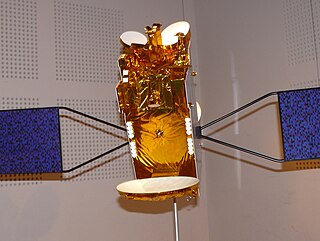
Eutelsat 5 West A, formerly Atlantic Bird 3 was a communications satellite belonging to the operator Eutelsat. Situated at 5° West, it broadcast satellite television, radio and other digital data. Developed for France Telecom it was transferred soon after its launch to the operator Eutelsat. It entered operational service in early September 2002. Its anticipated working life was 15 years. It was decommissioned in January 2023.
Broadcast media is being utilized by the Members Church of God International (MCGI), an international Christian religious organization with headquarters in the Philippines, to preach the gospel and expand internationally. The church is producing religious programs in different languages, aired in various countries, by acquiring time slots on several television stations. The church also maintains its own radio and television network for its 24/7 terrestrial, satellite and internet broadcasts.
Téléfoot: La Chaîne du Foot, also known as simply Téléfoot, was a French pay television channel owned by Mediapro. Launched on 17 August 2020, it was established as part of an agreement by Mediapro with Ligue de Football Professionnel (LFP) to acquire rights to Ligue 1 and Ligue 2 football beginning in the 2020-21 season. TF1 Group served as a content partner for the channel, under which it was branded as an extension of its football programme Téléfoot and employed its on-air personalities. The network was offered via both television providers and as an over-the-top streaming service.
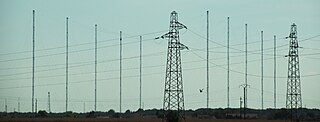
The Sainte-Assise transmitter is a very low frequency (VLF) radio transmitter and military installation located on the grounds of the Château de Sainte-Assise in the communes of Seine-Port, Boissise-la-Bertrand, and Cesson in the Seine-et-Marne department of the Île-de-France region of France. The transmitter's original equipment was inaugurated on 9 January 1921, at the time being the most powerful radio transmitter on Earth. On 26 November 1921 the first French radio program was transmitted from Sainte-Assise. In 1965 the transmitter was used to send VLF signals to FR-1, the first French satellite. Since 1998 the French Navy has used the transmitter to communicate with submerged submarines.











